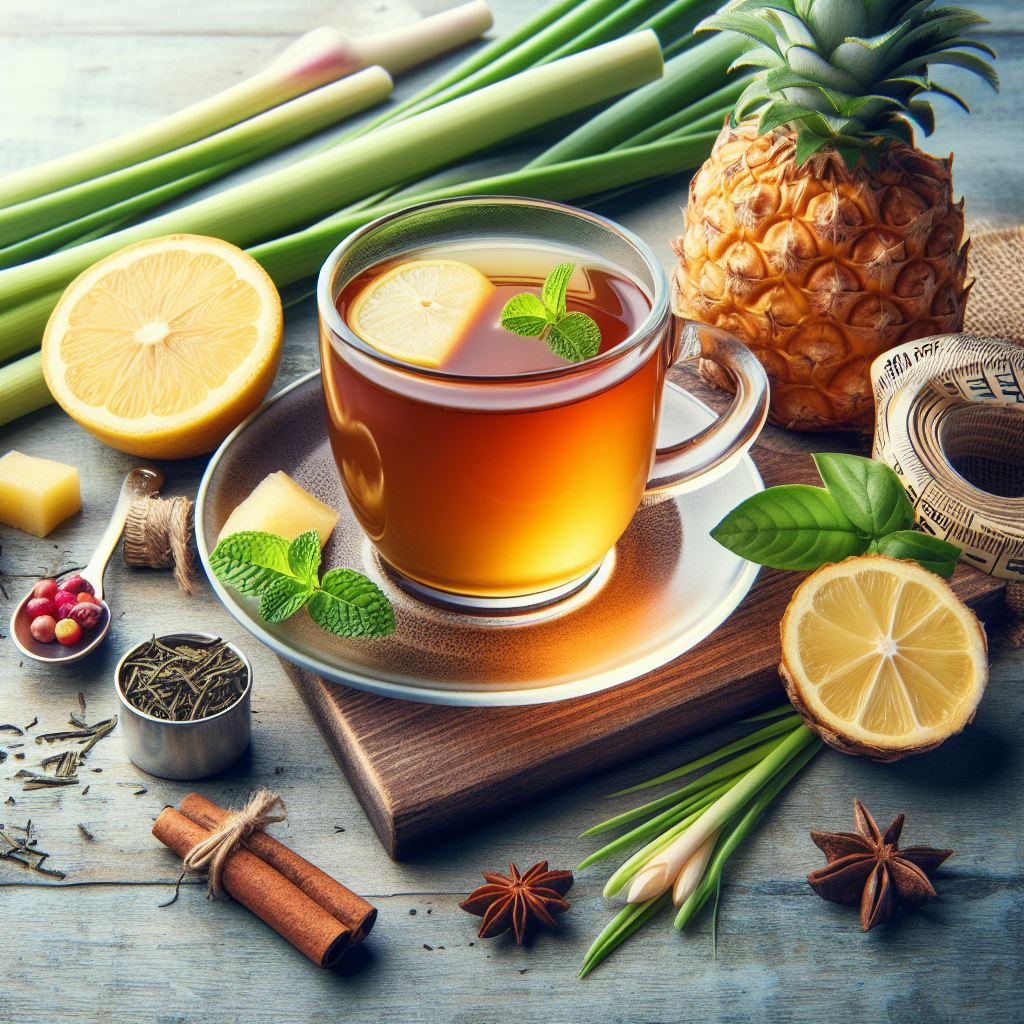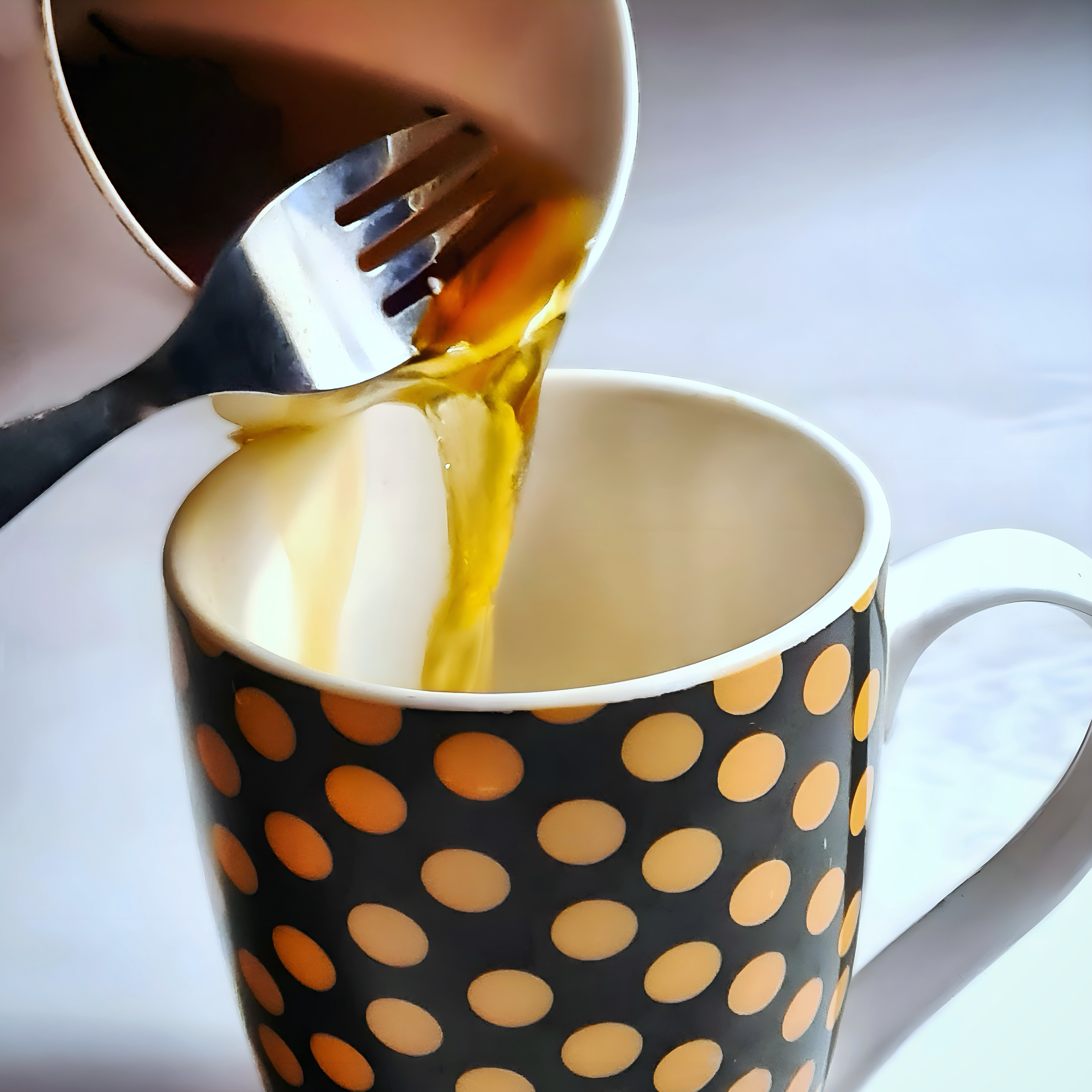White tea is one of the most exquisite and delicate types of tea in the world. It has a long and fascinating history, a rich and complex flavor profile, and a plethora of health benefits. But what exactly is white tea, what are its benefits, and how do you brew and enjoy it properly? In this comprehensive guide, we will explore everything you need to know about white tea, from its benefits, origins and production to its brewing and serving methods. Whether you are a tea novice or a tea connoisseur, you will find something new and interesting to learn about this amazing beverage!

What is White Tea?
White tea is a type of tea that is made from the young buds and leaves of the Camellia sinensis plant, the same plant that produces green, black, oolong, and pu-erh teas. However, unlike these other types of tea, white tea undergoes minimal processing and oxidation, which preserves its natural antioxidants and gives it a light and delicate flavor.
The name “white tea” comes from the fine silvery-white hairs that cover the unopened buds of the tea plant. These hairs give the buds a whitish appearance and also protect them from insects and frost. White tea is harvested primarily in China, mostly in the Fujian province, but it is also produced in other regions such as Taiwan, Nepal, Thailand, Sri Lanka, and India.
Types of White Tea:
There are different types of white tea, depending on the variety of the tea plant, the harvesting time, and the processing method. Here is a quick guide to some of the most popular types of white tea are:
Silver Needle (Bai Hao Yin Zhen):
This is the most prized and expensive type of white tea. It is made exclusively from the unopened buds of the Da Bai (Big White) cultivar of the Camellia sinensis plant. The buds are picked only during a few days in early spring, when they are covered with fine white hairs. The buds are then withered and dried without any rolling or firing. This results in a white tea that benefits from a pale yellow color, a floral and fruity aroma, and a sweet and mellow taste.

White Peony (Bai Mu Dan):
This is a more common and affordable type of white tea. It is made from a mix of buds and young leaves of the Da Bai or Da Hao (Big Hair) cultivars of the Camellia sinensis plant. The buds and leaves are picked in late spring or early summer, when they are still tender and fresh. The buds and leaves are then withered and dried with minimal rolling or firing. The result of this type of white tea benefits from a pale green or yellow color, a floral and grassy aroma, and a smooth and refreshing taste.

Long Life Eyebrow (Shou Mei):
This is a lower grade type of white tea. It is made from older leaves and stems that are left over after making Silver Needle or White Peony. The leaves and stems are picked in late summer or autumn, when they have lost some of their freshness and flavor. The leaves and stems are then withered and dried with more rolling or firing than Silver Needle or White Peony. The result of this white tea benefits from a dark yellow or brown color, a fruity and woody aroma, and a strong and robust taste.

Tribute Eyebrow (Gong Mei):
This is another lower grade type of white tea. It is similar to Long Life Eyebrow, but it is made from leaves that are slightly younger and more tender. The leaves are picked in late spring or early summer, when they still have some freshness and flavor. The leaves are then withered and dried with moderate rolling or firing. The resulting white tea benefits from a light yellow or brown color, a floral and fruity aroma, and a smooth and sweet taste.

Health Benefits of White Tea
White tea is not only delicious but also healthy. It contains many antioxidants that can protect your body from free radical damage, inflammation, aging, and chronic diseases. Below is a guide to the common health benefits associated with white tea:
- Weight management: White tea may help you lose weight by boosting your metabolism, burning fat, reducing appetite, and preventing fat accumulation. A study found that white tea extract can inhibit the growth of fat cells and stimulate the breakdown of existing fat cells. Another study found that white tea extract can reduce food intake in rats.
- Heart health: White tea may help you lower your blood pressure, cholesterol, triglycerides, and inflammation levels, which can reduce your risk of heart disease and stroke. A study found that white tea extract can improve endothelial function (the lining of blood vessels) in humans. Another study found that white tea extract can prevent LDL (bad) cholesterol from oxidizing (becoming more harmful) in vitro.
- Skin health: White tea may help you improve your skin condition by preventing wrinkles, sagging skin, sun damage, acne, and inflammation. A study found that white tea extract can protect human skin cells from UV-induced damage and aging in vitro. Another study found that white tea extract can reduce inflammation and oxidative stress in human skin cells in vitro.
Brewing and Serving White Tea

White tea is easy to brew and enjoy, as long as you follow some simple guidelines. Here are some tips and benefits of brewing and serving white tea properly:
1. Use fresh and pure water: 💧
The quality of water can affect the taste and aroma of white tea. Use filtered or spring water that is free of chlorine, fluoride, or other impurities. Avoid using distilled or mineral water, as they can make the tea taste flat or metallic.
2. Use the right water temperature: 🌡
As a general guide, the ideal water temperature for white tea is between 170°F and 185°F (76°C and 85°C). If the water is too hot, it can scald the tea leaves and ruin their delicate flavor. If the water is too cold, it can prevent the tea leaves from releasing their full flavor. To achieve the right water temperature, you can either use a thermometer or boil the water and let it cool down for a few minutes.
3. Use the right amount of tea leaves: ⚖️
The amount of tea leaves you use can affect the strength and flavor of white tea. Generally, you should use about 2 teaspoons of white tea leaves for every 8 ounces (240 ml) of water. However, you can adjust the amount according to your personal preference and the type of white tea you are using. For example, you may want to use more tea leaves for a lighter type of white tea, such as Silver Needle, or less tea leaves for a stronger type of white tea, such as Long Life Eyebrow.
4. Use the right steeping time: ⏰
The steeping time is how long you let the tea leaves infuse in the hot water. The optimal steeping time for white tea depends on the type of white tea you are using and how strong you like your tea. As a general rule, you should steep white tea for 3 to 5 minutes. However, you can steep it for longer or shorter depending on your personal preference and the type of white tea you are using. For example, you may want to steep Silver Needle for up to 10 minutes to bring out its full flavor, or White Peony for only 2 minutes to keep it light and refreshing.
5. Use the right teaware: 🫖
The teaware you use can affect the brewing and serving of white tea. You should use a teapot or a cup that is large enough to allow the tea leaves to expand and release their flavor. You should also use a teapot or a cup that is made of a material that does not alter the taste or aroma of white tea. Glass, porcelain, ceramic, or stainless steel are good choices for white tea the taste. Avoid using plastic, aluminum, or iron, as they can guide chemicals or metals into your white tea.
Flavor Profiles and Pairings

White tea has a delicate and nuanced flavor profile that can vary depending on the type of white tea you are drinking. Some common traits used to describe the overall flavor profile of white tea are floral, grassy, honey, fruity, melon, peach, apricot, vanilla, chocolate, citrus, herby, mild, subtle, delicate and sweet.
To appreciate the aromatic benefits and flavor profile of white tea, you should drink it plain without adding any milk, sugar, lemon, or other ingredients. However, if you want to enhance or complement the flavor of white tea, you can pair it with some food items that match its characteristics.
Some examples of food pairings that go well with white tea are:
- Light pastries: White tea can balance out the sweetness and richness of pastries such as scones, muffins, croissants, or cookies. You can also add some jam or honey to your pastries to guide the fruity notes of white tea.
- Fruits: White tea can harmonize with the freshness and acidity of fruits such as berries, grapes, apples, pears, or citrus fruits. You can also make a fruit salad or a smoothie with white tea as a base to create a refreshing and healthy drink.
- Cheeses: White tea can contrast with the creaminess and saltiness of cheeses such as brie, camembert, goat cheese, or feta cheese. You can also add some crackers or bread to your cheese plate to create a satisfying snack.
White Tea Around the World
White tea is not only popular in China but also in other parts of the world. Different cultures have different ways of consuming and appreciating white tea. Below are just some examples of how white tea is enjoyed around the world:
Japan 🇯🇵
White tea is relatively new in Japan but it is gaining popularity among young people who are looking for a healthy and trendy drink. It is often blended with matcha (green tea powder) or flavored with fruits such as yuzu (Japanese citrus) or sakura (cherry blossom) to create unique and colorful beverages. Moreover, white tea is used in traditional Japanese sweets, such as wagashi (rice cakes) or mochi (glutinous rice balls), to add a subtle and refined taste.
Morocco 🇲🇦
White tea is a niche product in Morocco, where green tea is the dominant type of tea. However, white tea is appreciated by affluent consumers who are looking for premium and exotic teas. White tea is usually brewed with mint leaves and sugar to create a refreshing and sweet drink. White tea is also served in special occasions, such as weddings or festivals, to show hospitality and respect to guests.
India 🇮🇳
White tea is not very popular in India, where black tea is the most preferred type of tea. However, white tea is produced in some regions, such as Darjeeling, Assam, and Nilgiri, for export purposes. White tea is also consumed by some health-conscious consumers who are aware of its benefits. White tea is typically brewed with hot water and enjoyed plain or with honey or lemon.
United Kingdom 🇬🇧
White tea is a growing segment in the UK, where black tea is the traditional type of tea. It is favored by consumers who are looking for a lighter and more delicate alternative to black tea. Additionally, white tea is associated with health benefits and wellness, as it contains less caffeine and more antioxidants than black tea. White tea is usually brewed with hot water and consumed without milk or sugar.
United States 🇺🇸
White tea is a relatively new phenomenon in the US, where coffee is the main hot beverage. However, white tea is becoming more popular among consumers who are interested in natural and organic products, as well as speciality and premium teas. White tea is also seen as a healthy and refreshing drink with many benefits, especially when iced or flavored with fruits or herbs. White tea is commonly brewed with hot water and enjoyed plain or with sweeteners or creamers.
Tips for Selecting and Storing White Tea:

White tea is a delicate and exquisite beverage that deserves careful attention and appreciation. To enjoy its full flavor and aroma, you need to choose high-quality white tea and store it properly. Here are some tips to help you with that:
- Choose white tea that is made from young buds and leaves, preferably from the original regions of Fujian Province, China. These teas have more antioxidants and less caffeine than other types of tea.
- Look for white tea that has a silvery-white appearance, indicating the presence of fine hairs on the buds. Avoid teas that are dull, brown, or yellow in color, as they may be old or oxidized.
- Check the aroma of the tea before buying. It should be fresh, floral, and sweet, not musty, smoky, or sour.
- Buy loose-leaf white tea rather than tea bags, as they retain more flavor and quality. Tea bags often contain crushed or broken leaves that may lose their freshness and aroma faster.
- Store white tea in an airtight container in a cool, dry, and dark place. Avoid exposure to light, heat, moisture, and strong odors, as they can degrade the tea’s quality and flavor.
- Do not refrigerate or freeze white tea, as this can cause condensation and mold growth. Also, do not store white tea for too long, as it may lose its freshness and potency over time.
Frequently Asked Questions:
Here are some common questions and misconceptions about white tea that you may have:
How much caffeine does white tea have?
White tea contains caffeine, but the amount varies depending on the type, brand, brewing method, and steeping time of the tea. As a general guide, a cup (250 mL) of white tea contains 6–55 mg of caffeine, which is less than coffee (96 mg) but similar to green tea (30–70 mg) and black tea (47–90 mg). If you are sensitive to caffeine or want to reduce your intake, you can choose white teas that are made from buds rather than leaves, brew them with lower temperature water (190°F/90°C or lower), and steep them for shorter periods (4–5 minutes or less).
How do I brew white tea to suit my preference?
White tea is very versatile and can be brewed to suit different tastes and preferences. If you like a light and delicate flavor, you can use 1 teaspoon of loose-leaf white tea per cup (250 mL) of water, brew it with water at 175°F/80°C for 2–3 minutes, and enjoy it without any additives. If you prefer a stronger and bolder flavor, you can use 2 teaspoons of loose-leaf white tea per cup (250 mL) of water, brew it with boiling water for 5–7 minutes, and add honey or lemon if desired.
What are the potential side effects of white tea?
White tea is generally considered safe to drink with many health benefits for most people. However, there are some potential side effects that you should be aware of:
- Caffeine sensitivity: Like all teas, white tea contains caffeine. Overconsumption can lead to caffeine-related side effects such as jitteriness, insomnia, or an upset stomach.
- Reduced iron absorption: White tea contains tannins that can bind to iron in plant-based foods and reduce its absorption in your digestive tract. If you have low iron levels or follow a vegan or vegetarian diet, you may want to drink white tea between meals or with foods rich in vitamin C to enhance iron absorption.
- Skin irritation: White tea extract may cause skin irritation when applied topically. If you have sensitive skin or allergies, you may want to avoid using white tea products on your skin.
Conclusion:
White tea is a wonderful drink that can make you feel good in many ways! It has lots of antioxidants that can keep your cells healthy and prevent diseases. Not only thus, it also has a light and refreshing taste that can calm your mind and body. To enjoy the best quality and taste of white tea, you should pick high-quality loose-leaf teas from trusted sources and keep them in airtight containers away from light, heat, moisture, and smells. You can also make white tea the way you like it by changing the amount of tea leaves, water temperature, and steeping time.
White tea is a delicate and exquisite drink that deserves your attention and appreciation. We hope this guide has taught you something new about white tea and its many benefits, whilst inspiring you to try it out. Stay posted for more comprehensive guides in our ‘Tea 101’ series and discover the amazing world of tea! ☕️
Discover More Tea-Related Articles:
- Soothing Teas for Gastritis Relief: The Ultimate Guide for Your Stomach
- Milk Thistle Tea: The Ultimate Brew for Wellness and Vitality
- How to Make Sparkling Tea: A Bubbly Twist to Your Tea Experience
- How to Use Oranges with Tea for a Zesty and Healthy Drink
- The Perfect Match: How to Find the Best Books and Tea Pairings for Your Reading Mood
Sources:
- Thielecke F, Boschmann M. The potential role of green tea catechins in the prevention of the metabolic syndrome – a review. Phytochemistry. 2009 Jan;70(1):11-24. doi: 10.1016/j.phytochem.2008.11.011. Epub 2009 Jan 14. PMID: 19147161.
- Dulloo AG, Duret C, Rohrer D, Girardier L, Mensi N, Fathi M, Chantre P, Vandermander J. Efficacy of a green tea extract rich in catechin polyphenols and caffeine in increasing 24-h energy expenditure and fat oxidation in humans. Am J Clin Nutr. 1999 Dec;70(6):1040-5. doi: 10.1093/ajcn/70.6.1040. PMID: 10584049.
- Euromonitor International (2020). Tea in Morocco | Market Research Report | Euromonitor [Internet]. Euromonitor.com
- Tea Board of India (2019). All India Tea Consumption Study – Final Report [Internet]. Teaboard.gov.in





Leave a Comment